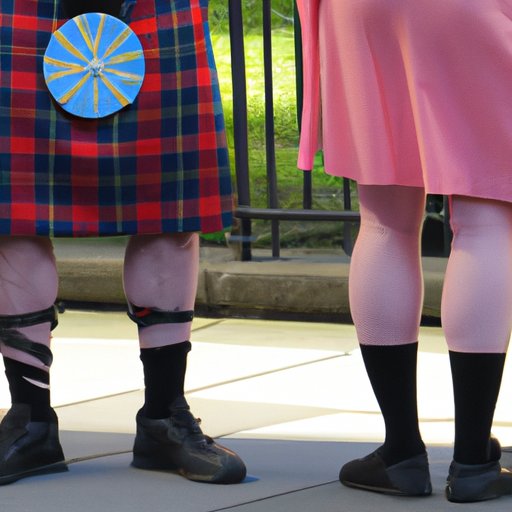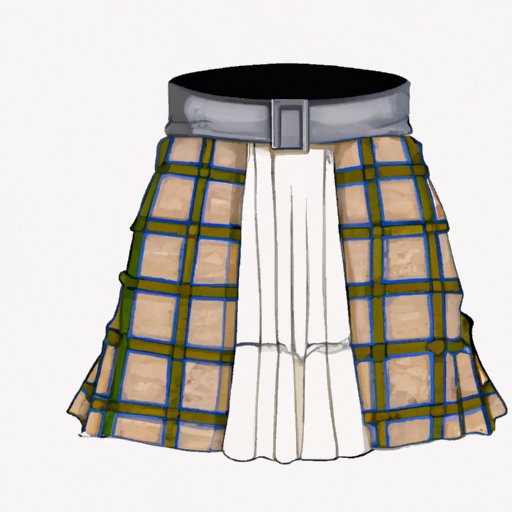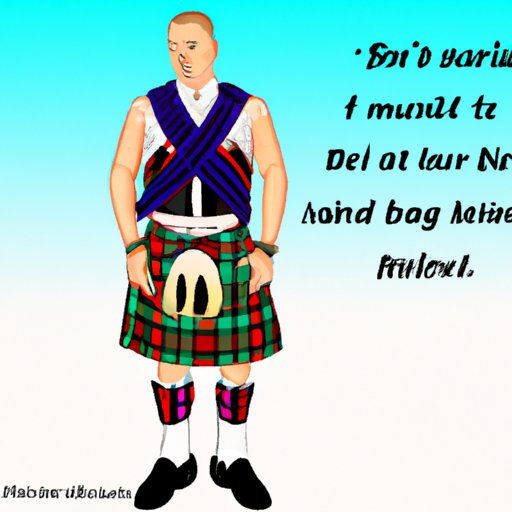
Introduction: Exploring the Debate on Wearing a Kilt and Cultural Appropriation
Wearing a kilt is a popular fashion choice with people around the world. But some have raised questions about whether wearing a kilt could be considered cultural appropriation. In this article, we’ll explore the debate surrounding the issue of wearing a kilt and cultural appropriation.
A. Definition of Cultural Appropriation
Before diving into the debate, it’s important to understand what is meant by “cultural appropriation.” Generally speaking, cultural appropriation occurs when a person or group takes elements from another culture without permission or proper recognition. This can include adopting elements of another culture’s clothing, music, language, art, or other aspects of their cultural identity.
B. Overview of the Debate
The debate around wearing a kilt and cultural appropriation has been ongoing for many years. Supporters of kilt-wearing say that it’s a way to honor and celebrate Scotland’s vibrant culture, while opponents argue that it’s an act of disrespect or even exploitation. Both sides of the debate have valid points to consider, which makes it an ongoing conversation.
II. A Historical Perspective on Kilts and Cultural Appropriation
To gain a better understanding of the debate, it’s helpful to look at the history of kilts and how they’ve been appropriated in the past.

A. The Origins of the Kilt
The kilt originated in Scotland in the 16th century. Originally, the kilt was a garment worn by men in the Scottish Highlands. It was made of thick wool and could be wrapped around the body to keep warm in cold temperatures. Over time, the kilt became a symbol of Scottish pride and heritage.

B. How the Kilt Has Been Appropriated in the Past
In the 18th and 19th centuries, the kilt was adopted by British military regiments as part of their uniforms. This sparked a wave of kilt-wearing outside of Scotland, with people from other countries embracing the kilt as a fashion statement. In the 20th century, the kilt experienced a resurgence in popularity, particularly among the punk and alternative music scenes.
III. What Does it Mean to Wear a Kilt Today?
Today, the kilt is more popular than ever. People around the world are wearing kilts for a variety of reasons, from celebrating their Scottish heritage to simply expressing their personal style. But does wearing a kilt still carry the same cultural significance it did in the past? Let’s take a closer look.
A. Popularity of Kilt-Wearing
Kilt-wearing is now commonplace in many parts of the world. The kilt is seen as a fashionable item of clothing, and it’s often used as a costume for special occasions such as weddings, festivals, and parties. Some people even wear kilts as everyday attire.

B. Perspectives from Different Cultures
People from different cultures have varying perspectives on the issue of wearing a kilt. For those of Scottish descent, the kilt is seen as a symbol of their national identity. However, for people from other cultures, the kilt may be viewed as an exotic or even offensive item of clothing. This is something to bear in mind when considering the debate around wearing a kilt and cultural appropriation.
IV. Examining the Impact of Kilt-Wearing on Scottish Culture
As we’ve seen, the kilt is an important symbol of Scottish culture. But how does kilt-wearing affect Scotland today? Let’s take a look.
A. How the Kilt is Viewed in Scotland
The kilt is still a source of pride for many Scots. It’s often seen as a symbol of strength and resilience, and many Scots view wearing a kilt as a way to show their national pride. At the same time, there is a growing awareness of the issue of cultural appropriation and the need to respect other cultures when wearing a kilt.

B. The Role of Respect in Wearing a Kilt
Respect for other cultures is essential when it comes to wearing a kilt. Showing respect means being aware of the history and significance of the kilt, and taking the time to learn about its place in Scottish culture. It also means being mindful of how others might perceive your kilt-wearing and acting accordingly.
V. Investigating the Pros and Cons of Wearing a Kilt
When it comes to wearing a kilt, there are both benefits and potential drawbacks to consider. Let’s explore the pros and cons of kilt-wearing.
A. Benefits of Kilt-Wearing
For those of Scottish descent, wearing a kilt can be a way to show respect for their heritage and to celebrate their national identity. It can also be a way to make a fashion statement and express one’s personal style. Finally, wearing a kilt can be a great conversation starter, allowing people to share stories about their culture and background.
B. Potential Drawbacks of Kilt-Wearing
On the other hand, some people feel that wearing a kilt is a form of cultural appropriation. They argue that it’s disrespectful to use elements of another culture without proper acknowledgement or consent. Additionally, some people may find kilt-wearing offensive, as it can be seen as an attempt to appropriate another culture’s traditions.
VI. How to Wear a Kilt Responsibly
Whether you’re of Scottish descent or not, there are ways to wear a kilt responsibly and respectfully. Here are some tips for respectful kilt-wearing:
- Take the time to learn about the history and significance of the kilt.
- Be aware of how your kilt-wearing might be perceived by others.
- Show respect for other cultures when wearing a kilt.
- Give credit where credit is due and acknowledge the origins of the kilt.
- Be open to feedback and willing to listen to different perspectives.
VII. Conclusion
The debate around wearing a kilt and cultural appropriation is complicated and ongoing. Ultimately, it’s up to each individual to decide whether or not to wear a kilt, and if so, to do so in a respectful and responsible manner. By taking the time to learn about the history of the kilt and showing respect for other cultures, we can ensure that kilt-wearing is a positive experience for all involved.
(Note: Is this article not meeting your expectations? Do you have knowledge or insights to share? Unlock new opportunities and expand your reach by joining our authors team. Click Registration to join us and share your expertise with our readers.)
